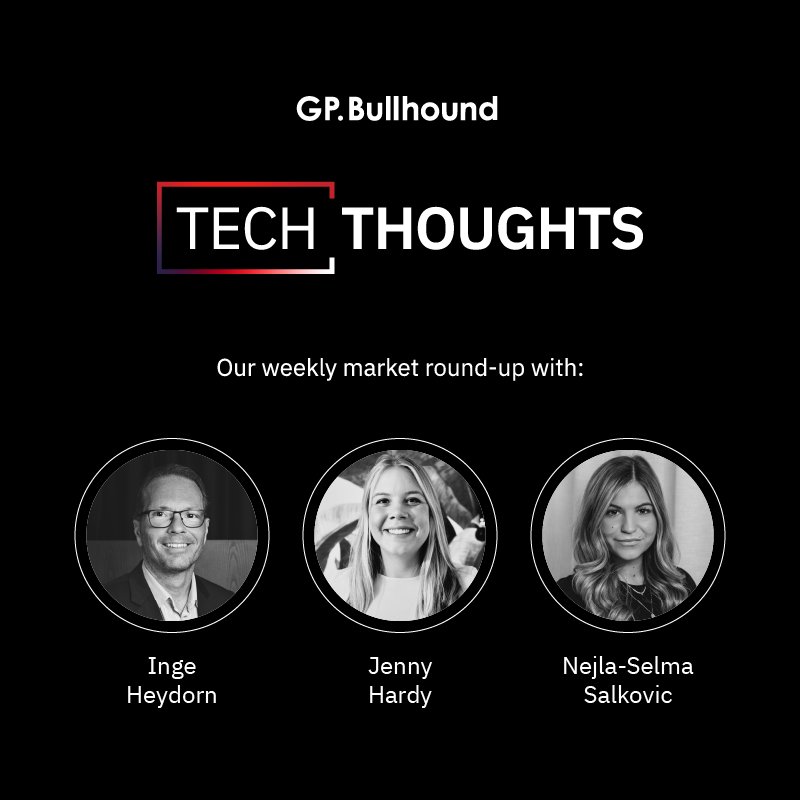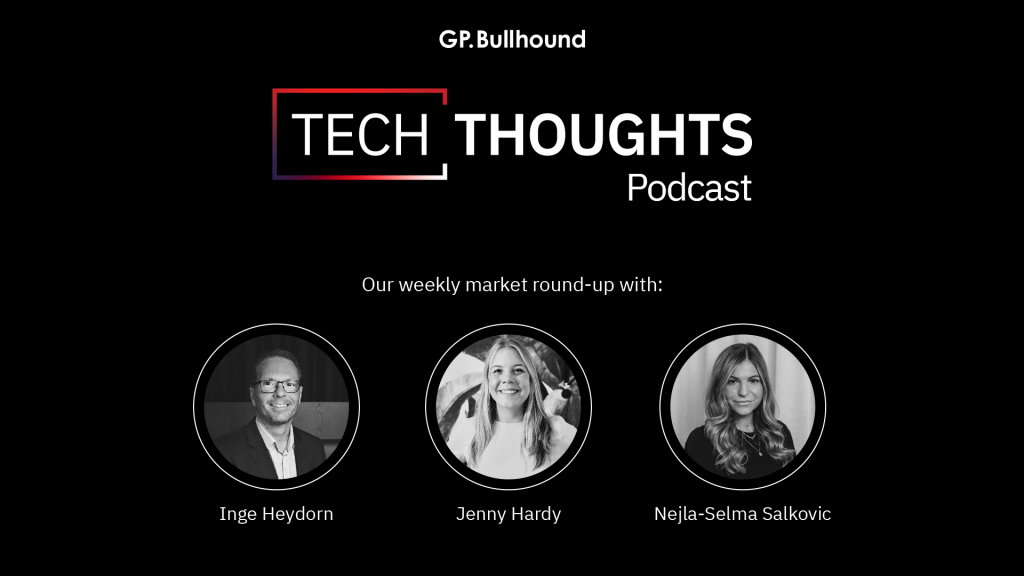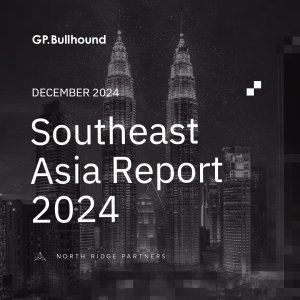Tech Thoughts Newsletter – 7 July 2023.

Market: The Fed minutes out this week indicate that they still aim to increase rates by 25bps at the next meeting on 25th July to bring down still-high inflation. The market is now pricing in a 95% chance that the Fed raises. The interest rate move has put pressure on the market and the tech sector, in particular, has been weak.
Portfolio: We have not made any major changes in the portfolio this week.
Netherlands introduces tougher export regulations – in line with expectations
- On Friday, the Hague confirmed the new Dutch regulations around shipments of ASML’s immersion tools. It means that 3 out of 4 of ASML’s immersion lithography systems will be restricted, which will make it very hard for Chinese customers to build sub 28nm production at scale (we think it is possible get to 7nm, but this requires a lot of multiple patterning, which makes it hard to make sense economically, though not to say that China won’t be trying).
- This was exactly in line with what ASML themselves have said on recent earnings calls. Importantly, the 1980i immersion tool can still be ordered and shipped without a licence, and this can enable at scale and economic production of 28nm, which is where we see a still large opportunity for China. This makes up our optimistic view of China continuing to order semicap equipment despite restrictions.
- As we mentioned, ASML anticipated the rules and we expect any orders that are now on restricted equipment to be converted to the 1980i tool.
- ASML put the following out in a statement:
Based on today’s announcement, we confirm that we do not expect these measures to have a material impact on our financial outlook that we published for 2023 or for our longer-term scenarios as communicated during our Investor Day in November 2022.”
Portfolio view: This is in line with our prior expectation, that while US export controls are preventing China from receiving leading-edge machines, they can still receive equipment to build out trailing or more mature node technology. Our view is that it makes a lot of sense for China to try to build up a very strategic position in trailing edge semis. The reality is that there is a structural supply shortage in trailing edge globally; these trailing edge semis are critical (in autos, industrial) – that was clearly borne out by the shortage during the pandemic, and it is only TSMC who have meaningful supply outside of China (Global Foundries is still relatively small in terms of capacity). It’s also an area the US has, and continues to, ignore (even with the CHIPS act), after Intel sold off or reused most of its trailing edge fabs decades ago. China building up critical supply not only for its domestic demand but also for the US needs of its consumers would probably put them in a reasonably powerful negotiating position.
We believe China will continue to spend be a big contributor to semicap equipment revenue for the next several years. We own ASML, LAM Research, Applied Materials and KLA.
China retaliates with restrictions on chemicals exports
- Beijing this week imposed export controls on gallium and germanium, two metals used in the chipmaking process.
- In particular, Gallium is used in compound semis. Gallium Nitride is widely used instead of silicon in manufacturing of semiconductors and chips, and offers cost-benefit advantages vs silicon/silicon carbide for various use cases. The key benefit of gallium nitride lies in a superior switching performance, resulting in higher efficiency and lower system cost. Some applications, like chargers and adapters, will over time migrate directly from silicon to gallium nitride. (We’ve spoken about it before in relation to Infineon, who recently acquired Canadian company GaN. GaN is a provider of Gallium nitride-based products and solutions for power conversion.)
- Exporters will need to apply for licences if they want to ship them outside China, and will be required to report details of the overseas buyers and their applications.
- A bit like the move China made to ban Micron products, this looks to be a direct response to the restrictions the rest of the world is putting on China.
- China controls ~80% of the world’s gallium and germanium output. The metals themselves aren’t rare – they’re a by-product of mining ore for aluminium (Bauxite) and zinc, where China dominates production.
- The reality is that production can, and will, shift. If China restricts exports and prices rise, other countries will be incentivised to ramp its own production.
- There was a similar impact when rare earth metals limitations were put in place – while China controlled the production, it didn’t control the reserves, and price rises created an incentive for other countries to develop their own refining industries.
- TSMC put out a statement on Thursday that it does not expect any direct impact on its production from the restrictions.
- WIN Semi also stated that the majority of its Gallium substrate supply comes from Germany and Japan.
Portfolio view: It’s certainly not helpful – fundamentally or rhetorically – for the market moving back into tit-for-tat trade wars, but GaN is still a small part of Infineon’s business (we think <5%). In the very short term, they likely have inventory on hand, and in the mid-term, we expect that production will ramp outside China to meet the expected increased demand if there are difficulties gaining export licences.
And back at you… US rumoured to restrict China’s access to cloud computing
- The WSJ reported that the Biden administration would restrict Chinese companies’ access to US cloud computing services. It would mean that AWS, Azure, GCP and Oracle would need US government permission before they provide cloud computing services that run on advanced AI chips (like Nvidia’s A100 and H100).
- We suppose it’s effectively trying to limit any loophole China might have to train large language models (those with military applications) on high-end compute, which it can’t build itself (we spoke last week about the current restrictions in the interconnect speed).
Portfolio view: it’s been reported in recent months that AWS, Microsoft, Google and Oracle are all supply constrained on their high-end AI compute capacity and have limited availability, so we don’t think this will have a short-term financial impact (noted that this AI compute capacity is separate from the more general use compute capacity, which is currently facing optimisation headwinds).
Longer term, we don’t know how the controls will work (will the US insist on trying to monitor training models from Chinese customers? Are they even able to have visibility on whether the models will ultimately be used/repurposed for military applications?)
No new news on AI chip restrictions – and the Chinese are spending
- We wrote in last week’s letter about the rumoured AI chip restrictions. No news on that this week, but one article in the Chinese press caught our eye which reported that NetEase (Chinese gaming and internet company) will spend CNY 10bn a year ($1.4bn) on large language models.
- Right now, we believe Nvidia’s 800 variants is the only powerful accelerator which meets interconnect requirements – AMD’s MI250 is prohibited, and its MI100 is significantly slower.
Portfolio view: China (and the rest of the world) is spending big on AI chips – as we wrote last week, we wouldn’t be surprised if there’s a degree of pull forward or rush orders from China, especially in case chip restrictions increase. We own Nvidia and continue to think that demand far exceeds supply for Nvidia’s chips, and have an above consensus view for H2.
EV deliveries continue at a record pace – good for auto semis
- Several positive datapoints for our auto semis case this week: firstly Tesla announced much better than expected and reported record deliveries in the second quarter.
- The number of autos delivered in the second quarter came in at 466k, +80% yr/yr and the company announced it had increased its production to 480,000. Though Tesla doesn’t release separate deliveries for China, we do have estimates from China’s Passenger Car Association which reported Tesla sold a record 93,680 Chinese manufactured vehicles in June, up 19% yr/yr and 21% mth/mth.
- It’s consistent with the second datapoint this week which was Chinese June auto deliveries.
- Auto continues to be the standout area of strength within a broadly weak Chinese economy, and tax breaks for the sector were extended last month.
- In June, Overall China EV deliveries are estimated at +15% mth/mth and +30% yr/yr.
- Chinese BYD (and the world’s biggest EV maker) sold over 250,000 cars, +5% mth/mth – over half of these were pure EV (the rest were plug-in hybrid). Li Auto delivered they were up 15% mth/mth; Nio +75%; Xpeng +15%.
- We’ve spoken a lot this year about the price war in electric vehicles, particularly in China, where the sheer number of competitors emerging (300+) continues to astound us. Indeed, this week, Tesla and nine Chinese automakers, including BYD, Nio, LiAuto, made a pledge to “fair market order in the auto market”, committing to maintaining fair competition, after the aggressive price wars have left many automakers close to bankruptcy.
- An interesting statement that “we will put quality first, use quality-oriented, high-quality products…”, could support further semi content increases as automakers have to compete not just on pricing. That in turn could lead to higher IGBT/SiC demand for Infineon.
- More broadly it’s clear that China doesn’t want its automakers to compete aggressively and destroy vast amounts of economic value (they’ve stopped aggressive competition before in the internet sector) –auto remains an industry in which they can compete effectively globally.
- It’s worth highlighting also that BYD launched its premium Denza N7 this week. It reportedly had 20,000 pre-orders, of which ~12,000 were made in the first 24 hours of its release. It will cost ~CNY300k (which is ~USD40k – in the same region as the Tesla Model Y but significantly cheaper than BMWs i7, which is about 4x the price).
- Tesla has had six price cuts this year, we think, which has clearly helped to drive demand. We expect continued aggressive pricing in the sector and that’s one of the reasons we avoid owning any auto OEMs, with Tesla the one we’re most often asked about.
- While we believe the world will shift to EV and that Tesla can sell many cars and make large amounts of revenue, we don’t believe that it will make a sustainable level of profit and returns that could justify the valuation.
- We think the barriers to entry in an EV world are even lower than in the traditional combustion engine market, which has historically been a difficult industry in which to make a sustainably high return.
- That said, reducing EV prices and stimulating demand for EVs is certainly a positive for semis suppliers, where (unlike auto OEMs) they have pricing power that enable them to make a sustainable return on invested capital. Infineon (owned) supplies chips across Chinese brands, including BYD.
- Global automakers across the board (Volvo, GM, Toyota all out this week) are showing strong EV growth.
Portfolio view: We continue to hold Infineon and NXP where we see their autos businesses remaining largely sold out into 2023 – they benefit from the increased semiconductor content in EV vs ICE and we expect that, given the Q2 EV sales and production data we’ve seen, they are likely to produce very robust results. We don’t invest in any Electric Vehicle/auto manufacturers.
Taiwanese monthly numbers – it does look as though we might be past the trough.
- HonHai reported its June sales this week, down 6% mth/mth and 20% yr/yr, which we think represents the ramp down in the iPhone. Their outlook statement pointed to Q3 vs Q2 growth being stronger than the prior two years, which we think speaks to a stronger-than-seasonal ramp in the new iPhone, which is consistent with the process node shift.
- Apple is shifting its processor from 5nm to 3nm, and so is likely expecting a more material upgrade cycle (given more material performance increases).
- UMC monthly sales showed further stabilisation –up again month on month but still down 23% yr/yr (same as May) – it does give us further confidence that the trough is firmly behind us.
- Largan too showed stabilisation, up slightly mth/mth, though still down yr/yr.
Portfolio view: We own Apple. HonHai’s Q3 outlook is consistent with a strong new iPhone cycle. As a reminder our above consensus view around Nvidia is also linked to this process node shift at Apple freeing up more 5nm capacity for Nvidia’s H100 product at TSMC.
Memory still in the doldrums, but maybe through the bottom.
- Samsung, a bit like Micron last week, reported objectively bad numbers, but profit was better than (very depressing) expectations. Operating profit down 96% yr/yr to KrW0.6trn. When the positive take is that you escaped losses for the quarter, things are quite bad.
- There is hope that AI demand (which we know is hugely memory and storage intensive) should drive a stabilisation of pricing.
- DDR5 mobile contract price edged up in Q2 and there’s an expectation that server memory should follow.
- We agree AI is more memory intensive (we think an AI training server has twice the DRAM content of a traditional enterprise server), but there’s no avoiding the fact that even now down to three players, memory is still an inherently commoditised and bad industry.
Portfolio view: This memory downturn is the worst the market has seen in over 10 years. While much of this is the result of extraordinary circumstances (pandemic, inflation), some of it is also the nature of the industry – we don’t own any memory players in the portfolio as the commoditised nature and reliance on each player staying rational on supply means that for us it doesn’t match with our sustainable return on invested capital process. Pricing stabilisation is however helpful in the portfolio to the extent that falling memory prices are not conducive to high levels of memory capex (and we own LAM Research, which is particularly exposed).
Embracer Group raises over $182m with new share offering
- It priced at a discount of 9% vs the prior closing price, and the EPS dilution from the issuance was ~6%.
- It was probably needed – as we’ve said before, there were increasing concerns around the financial leverage of the company (and now net debt will come at least close to its 1.0x net debt/EBIT target), though it was a change of tack from June where the company stated it didn’t need to raise capital.
- Alongside the release, it reiterated its FY EBIT guidance which is being helped by a strong Dead Island 2 (which we’re seeing in the sales charts).
Portfolio view: As discussed in previous letters, we do not own Embracer in our portfolio. We’ve argued that we continue to see weakness in their financials with the negative cash flow.

For weekly insights on the latest market updates, please subscribe to our Tech Thoughts podcast.
For more information about the latest trends and forecasts, please visit our official Tech Thoughts page.
We provide investors with access to category-leading technology companies, globally. Our assets under management have a total value of more than $1bn, and our limited partners include institutions, family offices and entrepreneurs. Learn more about our funds here.
Enquiries
For enquiries, please contact:
Inge Heydorn, Partner, at inge.heydorn@gpbullhound.com
Jenny Hardy, Portfolio Manager, at jenny.hardy@gpbullhound.com
Nejla-Selma Salkovic, Analyst, at nejla-selma.salkovic@gpbullhound.com
About GP Bullhound
GP Bullhound is a leading technology advisory and investment firm, providing transaction advice and capital to the world’s best entrepreneurs and founders. Founded in 1999 in London and Menlo Park, the firm today has 14 offices spanning Europe, the US and Asia.



